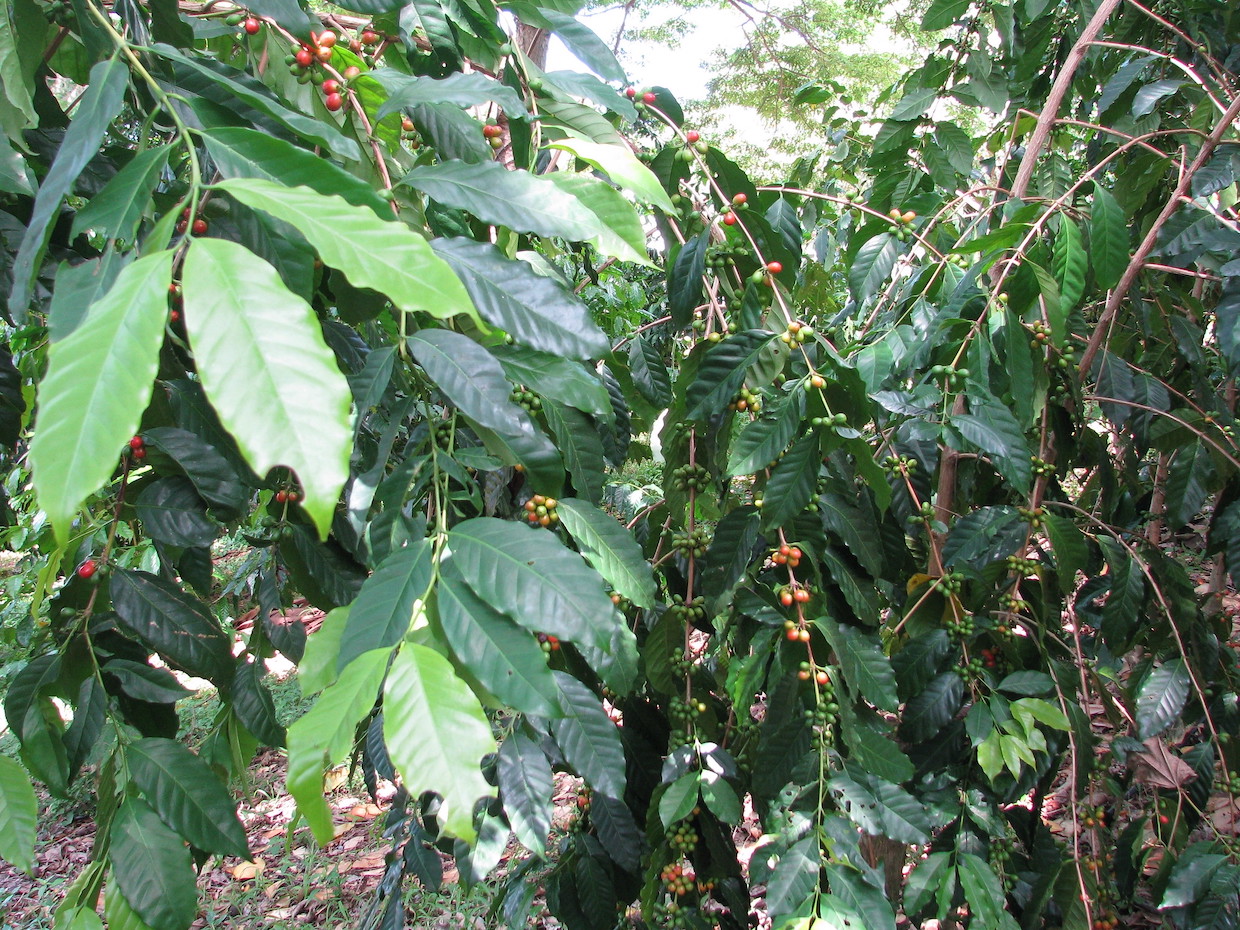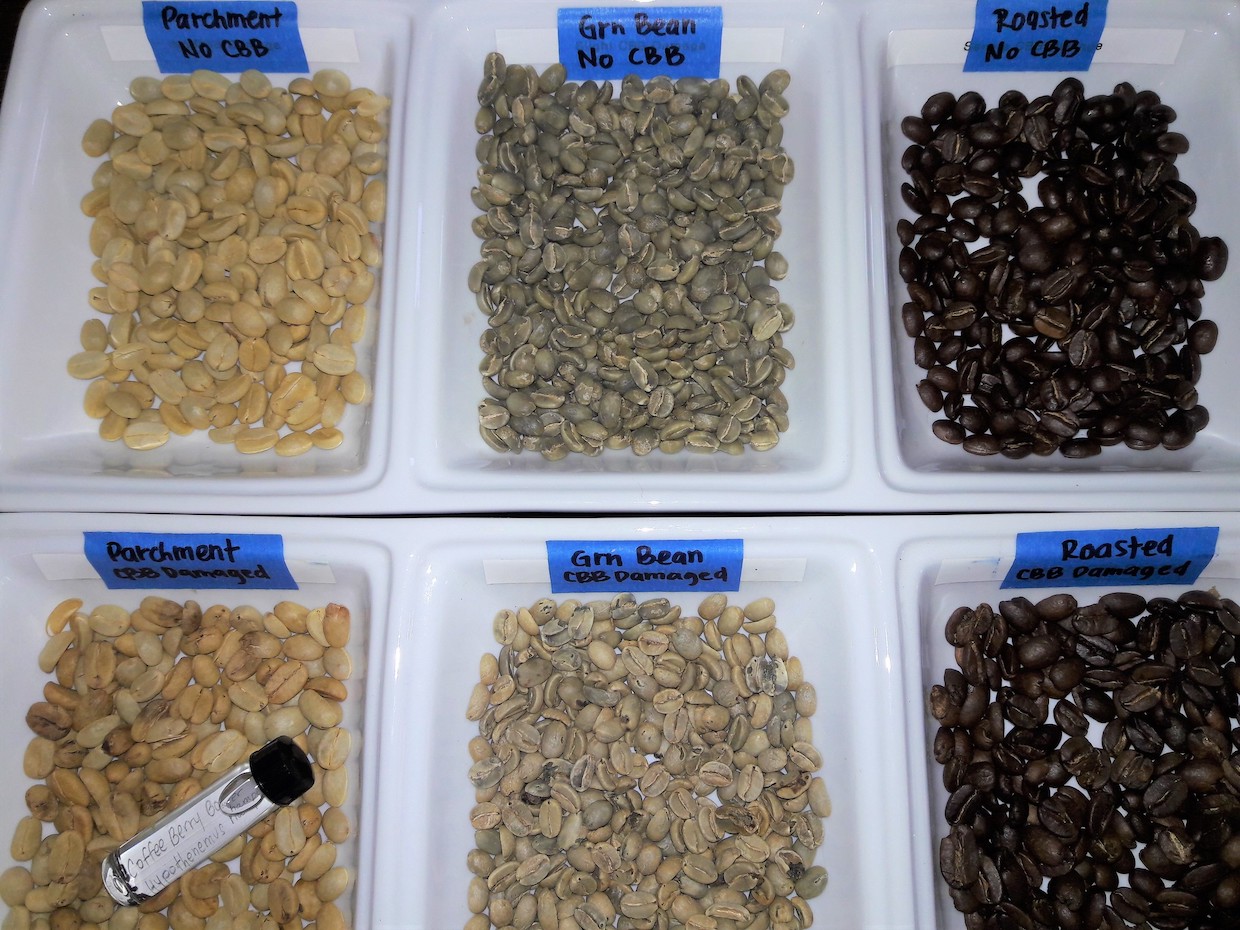
Coffee plants in Hawaii. The image “Coffee Tree” by merfam is licensed under CC BY 2.0.
By using fewer pesticides to control coffee berry borer (CBB) populations, Hawaiian coffee farmers may actually increase coffee production, harvested coffee quality and even economic gains.
This counterintuitive outcome regarding chemical controls relies upon increased plant cultural controls — namely, more frequent and strategic harvesting of coffee cherries.
This is according to a comprehensive analysis from a group of researchers in Hawaii who studied integrated pest management strategies on 10 Hawaiian coffee farms over two years.
A persistent foe to commercial coffee producers all over the world by infesting farms and diminishing yields and quality, CBB was first discovered on the island of Hawaii in 2010, on Oahu in 2014, on Maui in 2016 and on Kauai in 2020.
The researchers behind the new study say that it is the first of its kind to comprehensively quantify the costs and benefits associated with different types of picking and sanitation practices on Hawaiian farms, while also estimating total costs using pesticides for CBB.
The study pits two pest-management strategies against one another: “conventional management,” including frequent sprays of pesticides and few rounds of sanitation and harvesting; and “cultural control-focused management,” consisting of few sprays of pesticides and frequent sanitation and harvesting.
The latter strategy is repeatedly cited as having proven successful among producers in Colombia, Brazil, Mexico and Guatemala.

Coffee at various stages showing CBB damage. “Coffee Berry Borer – Now on Maui” by Forest & Kim is licensed under CC BY 2.0.
The study in Hawaii discovered clear economic benefits among farms that applied increased cultural controls, as opposed to heavier pesticide use.
“Results showed a significant positive impact of frequent and efficient harvesting on the regulation of CBB populations,” the authors wrote. “Over two consecutive coffee seasons, farms that used a combination of frequent harvesting and few pesticide applications exhibited significantly lower CBB infestation, better harvesting efficiency, higher harvested yields, higher quality of processed dried coffee, and higher net profits from the sale of harvested coffee compared to that of conventionally managed farms. Our findings demonstrate that frequent and efficient harvesting practices for CBB management are economically viable under Hawaiian agroecological conditions.”
Authors Luis Aristizábal, Melissa Johnson, Suzanne Shriner and Marisa Wall said that the economic findings of the study were “in line” with those of similar studies in Colombia. The study accounted for the increased costs of labor associated with ramping up cultural controls.
“Frequent harvesting as an effective method of control for CBB will depend on farmers securing enough pickers to conduct frequent harvesting, and coffee pickers receiving proper guidance and training in how to optimize sanitation picks, standard harvesting, and strip-picks,” the research team wrote. “Field workshops will likely be most effective in training pickers. The demonstration of proper technique could help to overcome any language barriers that may exist between farm owners and workers, particularly in Hawaii where most of the coffee laborers are from Latin America, the Philippines, and Micronesia.”
See the full study here.
Does your coffee business have news to share? Let DCN’s editors know here.
Nick Brown
Nick Brown is the editor of Daily Coffee News by Roast Magazine.






Comment